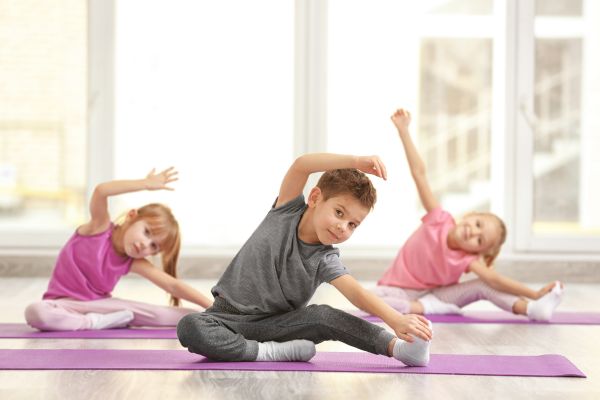Embarking on the journey of beginner gymnastics exercises can be both exhilarating and transformative. Whether you’re a child stepping into your first class or an adult seeking a fun and rewarding way to stay fit, gymnastics offers a powerful combination of strength, balance, flexibility, and coordination. With the right guidance, foundational skills, and mindset, anyone can begin to unlock the potential of their body through basic gymnastics training.
In this article, we’ll explore beginner gymnastics exercises, the essential tips to keep in mind, gear to consider, and the important rules that ensure safety and progress. No prior experience is necessary—just a willingness to learn and a desire to challenge yourself in a creative and athletic way.
Understanding the Basics of Beginner Gymnastics Exercises
Before diving into specific movements, it’s important to understand what makes gymnastics such a unique and effective discipline. Gymnastics is not just about flips and high-flying routines seen in the Olympics. At its core, gymnastics is the mastery of controlled movement using one’s body weight. For beginners, the exercises focus primarily on developing core strength, improving posture, increasing flexibility, and learning how to move with control.
These foundational qualities are built through exercises like body holds, rolls, balance work, and simple acrobatics. Each movement introduces the body to a new level of awareness and control, setting the stage for more advanced skills in the future.
Warming Up the Right Way
No gymnastics session should begin without a proper warm-up. This is a non-negotiable part of training that prepares the body for the dynamic movement gymnastics demands. Stretching the major muscle groups, especially the shoulders, wrists, hips, and hamstrings, is vital. Dynamic movements like arm swings, leg kicks, and light jogging help elevate the heart rate and improve circulation, which can prevent injury and improve performance.
Additionally, focusing on joint mobility helps the body adapt to the range of motion needed for many beginner gymnastics exercises. Without adequate preparation, even basic exercises can lead to discomfort or strain.
Mastering the Art of Balance and Control
One of the first challenges beginners face is developing balance. Simple exercises such as standing on one leg or walking along a low beam are deceptively effective at training the mind and body to stay aligned. Over time, these seemingly modest drills build the neuromuscular coordination that is essential for more complex movements.
Practicing balance also improves posture and helps create awareness of how your body behaves in space. This awareness is crucial in gymnastics, where precision and control are key to executing movements safely and effectively. As progress is made, maintaining control in awkward or unusual positions becomes second nature.
Building Strength Through Bodyweight Movements
Strength training in gymnastics is unlike traditional weightlifting. Instead of focusing on external weights, gymnastics emphasizes functional strength using your own body. Exercises like push-ups, hollow body holds, and wall-supported handstands are excellent for developing the muscles needed to support more advanced skills.
Core strength, in particular, is the cornerstone of successful gymnastics. A strong core stabilizes the body during movements like cartwheels, rolls, and even while maintaining balance on one foot. Incorporating beginner gymnastics exercises that challenge the abdominal muscles, like the tuck hold or plank variations, builds endurance and stability that translates into all aspects of training.
Flexibility as a Key to Success
Flexibility is not just for show—it’s a practical and protective aspect of gymnastics training. Many injuries in gymnastics stem from tight muscles or a lack of range in the joints. For beginners, focusing on consistent stretching routines will help prevent strains and make movements feel smoother and more natural.
Basic flexibility exercises include hamstring stretches, shoulder bridges, and split progressions. These should be done regularly and with care, allowing the body time to adapt and expand its range of motion. Over time, increased flexibility supports better alignment, easier transitions, and a wider variety of movements.
Essential Gear for Beginner Gymnastics
Starting gymnastics doesn’t require a massive investment, but a few key items can make the experience more comfortable and productive. A non-slip mat or padded surface is essential for safe practice at home. This provides cushioning for falls and protects the joints during landings.
Comfortable, form-fitting athletic clothing is also important, as it allows full range of movement without getting in the way. In a class setting, leotards are commonly worn, especially for children, but fitted workout gear works just as well for general training. Wristbands, grips, and athletic tape may also be introduced later as training intensifies.
Safety Rules and Guidelines Every Beginner Should Know
When practicing beginner gymnastics exercises, safety should always come first. Beginners should avoid attempting advanced skills or flips without supervision or proper instruction. Starting slowly, under the guidance of a coach or experienced gymnast, allows you to learn correct technique and avoid common mistakes.
Listening to your body is another critical rule. Pain is not part of the learning process in gymnastics. While soreness is expected, sharp or persistent pain is a signal that something may be wrong. Resting and recovering is as important as the training itself.
Understanding and respecting the boundaries of your body ensures long-term enjoyment and progress in gymnastics. Overexertion can lead to setbacks, so learning to pace your practice and celebrate small victories keeps motivation high and injuries at bay.
The Role of Consistency in Gymnastics Progress
Perhaps the most overlooked aspect of gymnastics for beginners is the value of consistency. The body adapts through repetition and gradual progression. Training two or three times a week, even for short periods, yields far better results than occasional, intense sessions. Establishing a routine builds both physical and mental discipline, helping movements become more fluid and instinctive.
Sticking with beginner gymnastics exercises, even when progress feels slow, builds a strong foundation. Each session contributes to better coordination, strength, and flexibility, all of which are essential when you’re ready to take on more challenging skills.
Developing Confidence Through Gymnastics
One of the most rewarding aspects of beginner gymnastics is the confidence it fosters. Every time you master a new skill or even a small improvement in form, it sends a powerful message—you are capable of more than you thought. Gymnastics challenges you to push your limits, not by comparison to others, but by becoming a better version of yourself.
Confidence grows with each successful landing, balanced pose, or controlled movement. This newfound self-assurance often extends beyond the mat or gym, influencing how you carry yourself in daily life. It’s not just about physical strength but about believing in your ability to learn, adapt, and grow.
Conclusion: Embrace the Journey of Beginner Gymnastics Exercises
Starting with beginner gymnastics exercises opens the door to a world of movement, discipline, and personal growth. From learning basic balance and strength-building techniques to embracing flexibility and coordination, the journey is as fulfilling as the destination.
With the right mindset, consistent practice, and a commitment to safety, anyone can build a solid gymnastics foundation. Remember, it’s not about perfection—it’s about progress. So take that first step, embrace the learning curve, and enjoy every moment of your gymnastics journey.



